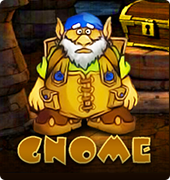| Виробник | Genesis Gaming |
| Кол-во линий | 228 |
| Кол-во барабанов | 36 |
| Фриспіни | Відсутнє |
| Бонусний раунд | Так |
| Мобільна версія | Так |
| Гра на подвоєння | Відсутнє |
Грати в Burning Desire (Горячее Желание) в онлайн казино:
Elslots ᐈ официальный сайт Эльслотс казино для игры на деньги
The zipa, a mythical tribal chief of the native Muisca people, was said to cover his body in gold dust, and from his raft offer treasures to the Guatavita goddess in the middle of the sacred lake. This old Muisca tradition became the origin of the legend of El Dorado.; Spanish for "the golden") is commonly associated with the legend of a gold city, kingdom, or empire purportedly located somewhere in the Americas.
Эльдорадо сеть магазинов — Википедия
Originally, El Hombre Dorado ("The Golden Man") or El Rey Dorado ("The Golden King"), was the term used by the Spanish in the 16th century to describe a mythical tribal chief (zipa) or king of the Muisca people, an indigenous people of the Altiplano Cundiboyacense of Colombia, who as an initiation rite, covered himself with gold dust and submerged in Lake Guatavita. A second location for El Dorado was inferred from rumors, which inspired several unsuccessful expeditions in the late 1500s in search of a city called Manoa on the shores of Lake Parime or Parima.

Two of the most famous of these expeditions were led by Sir Walter Raleigh. In pursuit of the legend, Spanish conquistadores and numerous others searched what is today Colombia, Venezuela, and parts of Guyana and northern Brazil, for the city and its fabulous king.
In the course of these explorations, much of northern South America, including the Amazon River, was mapped. By the beginning of the 19th century, most people dismissed the existence of the city as a myth.
Где находится Эльдорадо, затерянный золотой город?
The legend of the Seven Cities of Gold (Seven Cities of Cibola) led to Francisco Vázquez de Coronado's expedition of 1540 across the New Mexico territory. This became mixed with the stories of El Dorado, which was sometimes said to be one of the seven cities.
Several literary works have used the name in their titles, sometimes as "El Dorado", and other times as "Eldorado". Chiminigagua is related to Bachué, Cuza, Chibchacum, Bochica, and Nencatacoa. The original narrative can be found in the rambling chronicle El Carnero of Juan Rodriguez Freyle.

According to Freyle, the zipa of the Muisca, in a ritual at Lake Guatavita near present-day Bogotá, was said to be covered with gold dust, which he then washed off in the lake while his attendants threw objects made of gold, emeralds, and precious stones into the lake - such as tunjos.
In 1638, Freyle wrote this account of the ceremony, addressed to the cacique or governor of Guatavita: The ceremony took place on the appointment of a new ruler. Before taking office, he spent some time secluded in a cave, without women, forbidden to eat salt, or to go out during daylight.
Saved copy
The first journey he had to make was to go to the great lagoon of Guatavita, to make offerings and sacrifices to the demon which they worshipped as their god and lord. During the ceremony which took place at the lagoon, they made a raft of rushes, embellishing and decorating it with the most attractive things they had. They put on it four lighted braziers in which they burned much moque, which is the incense of these natives, and also resin and many other perfumes.
The lagoon was large and deep, so that a ship with high sides could sail on it, all loaded with an infinity of men and women dressed in fine plumes, golden plaques and crowns. As soon as those on the raft began to burn incense, they also lit braziers on the shore, so that the smoke hid the light of day.

 1.Українська Вулкан
1.Українська Вулкан  2.Вулкан Клуб
2.Вулкан Клуб  3.GMSlots
3.GMSlots  4.MaxBet
4.MaxBet  5.Eldorado Club
5.Eldorado Club  6.Joycasino
6.Joycasino 




